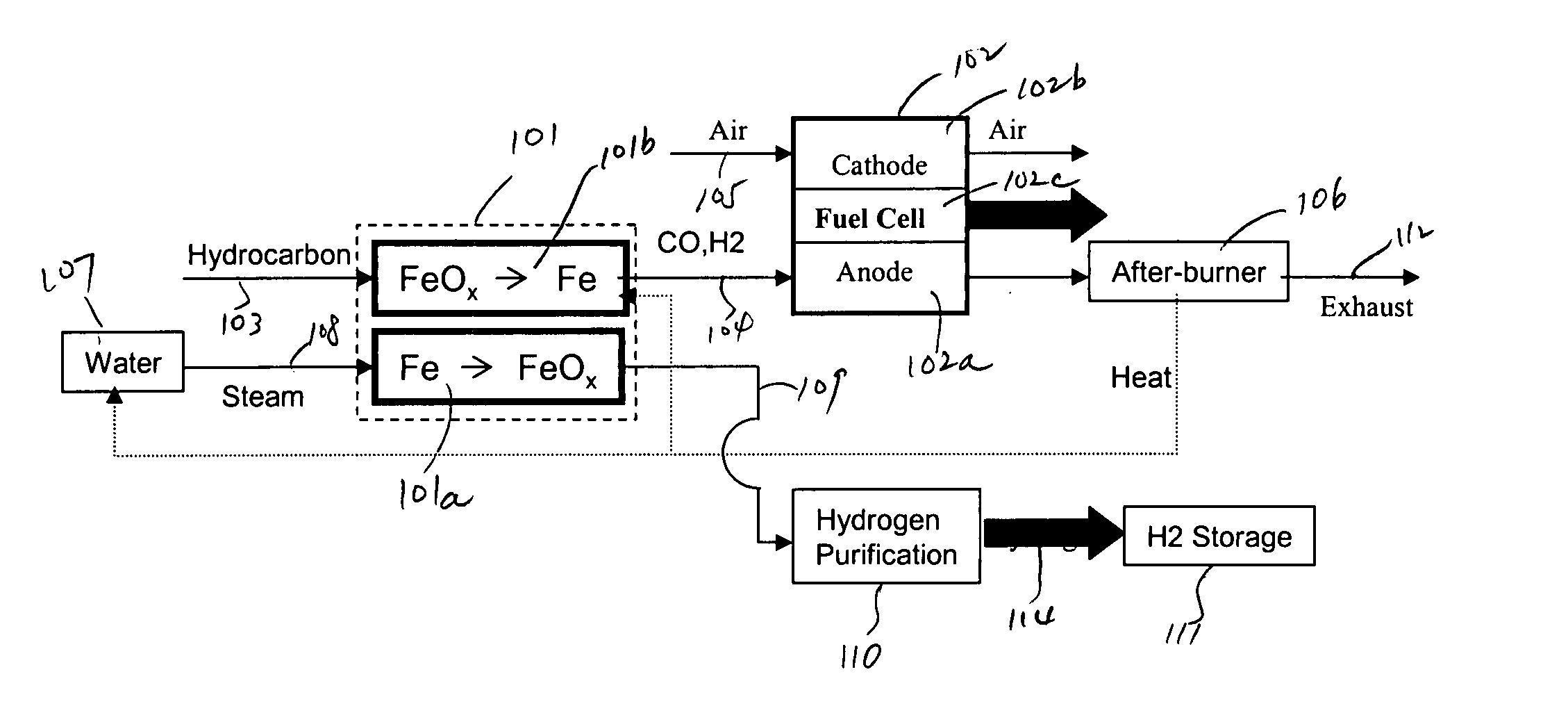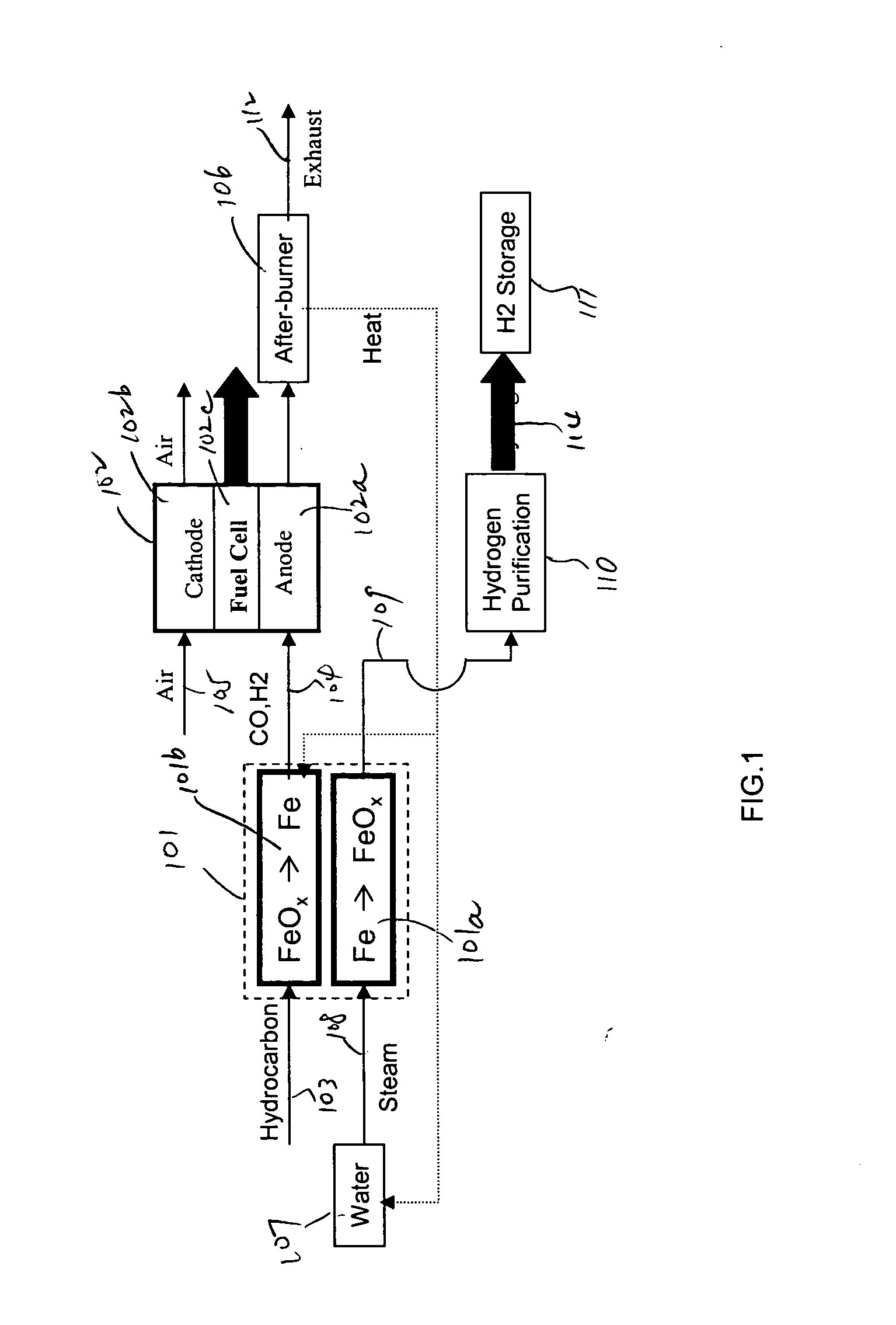Method for hydrogen and electricity production using steam-iron process and solid oxide fuel cells
a solid oxide fuel cell and steam iron technology, applied in the direction of aqueous electrolyte fuel cells, fuel cells for electrolyte generators, fuel cells for electrolyte, etc., can solve the problems of preventing the widespread use of fuel cells, unable to provide free hydrogen directly, and lack of hydrogen fuel infrastructur
- Summary
- Abstract
- Description
- Claims
- Application Information
AI Technical Summary
Benefits of technology
Problems solved by technology
Method used
Image
Examples
Embodiment Construction
In this detailed description, “fuel cell” and “fuel cell unit” also refer to one or more fuel cell stacks. A fuel cell is often formed by multiple identical fuel cell stacks. One kind of such fuel cell, known as “solid oxide fuel cell” (SOFC), is a ceramic fuel cell having an oxygen conducting electrolyte. SOFCs, which typically operate at temperatures between 400 to 1000° C., are made in tubular, planar or monolithic forms. These fuel cells use a hydrocarbon fuel, which may be any carbonaceous fuels, including natural gas, propane, methane, all paraffins, methanol, ethanol, propanol, gasoline, and diesel.
Because iron can have many oxidation states, there are many different iron oxide compounds, ranging from oxidation state 0 (i.e., elemental iron) to 3 (i.e., ferric oxide or Fe2O3), and many intermediate oxides FeOx, where x<1, FeO and Fe3O4. The present invention uses these oxidation states of iron to store oxygen. To simplify this detailed description, unless specified ex...
PUM
| Property | Measurement | Unit |
|---|---|---|
| temperature | aaaaa | aaaaa |
| temperature | aaaaa | aaaaa |
| temperature | aaaaa | aaaaa |
Abstract
Description
Claims
Application Information
 Login to View More
Login to View More - R&D
- Intellectual Property
- Life Sciences
- Materials
- Tech Scout
- Unparalleled Data Quality
- Higher Quality Content
- 60% Fewer Hallucinations
Browse by: Latest US Patents, China's latest patents, Technical Efficacy Thesaurus, Application Domain, Technology Topic, Popular Technical Reports.
© 2025 PatSnap. All rights reserved.Legal|Privacy policy|Modern Slavery Act Transparency Statement|Sitemap|About US| Contact US: help@patsnap.com



